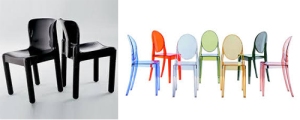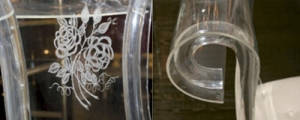We can also recall the success of Kartell, wich made plastics its workhorse proposing it as a valid alternative to glass for its lightness, resistance and cheapness; today this success is still witnessed by one of the wider stand around the Salone del Mobile fair; in this stand the atmosphere that fills you is that of a past yet modern (first successful pieces are the one of the Seventies) and a modern which sometimes remind us the importance of the past (as the famous chair Louis Ghost, with its baroque shapes). Even today, it is enough to take a ride at the Salone del Mobile fair in Milan, or simply at the Fuori Salone (events and exhibitions that animate the entire city of Milan during the design week), to realize that the plastic in all its forms, including PMMA, it is still the unquestioned leader.
credits:
http://www.kartell.it/global.aspx
Filed under: Acrylics, Architecture, Design, Fashion, Innovation, Plastics | Tagged: acrylic chair, acrylic furniture, fuorisalone, lightness, past and modern, plastics, resistance, salone del mobile | Leave a comment »






